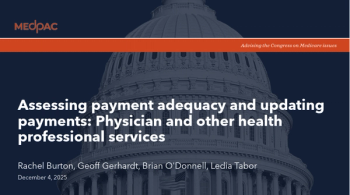
Competition driving malpractice premiums down
Doctors are benefitting from more companies entering the malpractice market, but the Affordable Care Act could end the slide
Medical malpractice premiums continue to hold steady or decline for primary care physicians (PCPs), helped by more insurance carriers entering the field and the ongoing consolidation of primary care practices.
Medical Economics’ 2013 Exclusive Malpractice Survey found that median (midpoint) annual premiums for family/general practitioners in 2012 were $11,900, the same as 2011. Internal medicine practitioners saw their premiums decline by 0.7%, from $12,900 to $12,800. Since 2009, median annual premiums for family/general physicians have dropped by 5.8%, and premiums for internal medicine practitioners have come down by 11.7%.
Overall, 58% of family/general practitioners and 62% of internists reported an increase or no change in their premiums, while 10% of family practitioners and 11% of internists reported a decrease. The remainder either did not know or didn’t respond. The median amount of reported increases among family practitioners was $980, while the median reported increase for internists was $1,200.
Data for the survey-part of the 85th Continuing Study conducted by Medical Economics-was collected from physicians in June via the Internet. Fifteen percent of survey respondents said their malpractice premiums went up in 2012, 41% said they remained the same, and 10% reported a decrease. The remaining 35% either didn’t know or didn’t answer. (For a complete breakdown of the 2012 data on malpractice premiums, see the
Among family practitioners, the median reported increase and decrease in premiums were $980 and $890, respectively. For internists, the reported amounts were $1,200 and $780.
Switching carriers, managing risk
For Jeffrey Kagan, MD, an internist in Newington, Connecticut, and Medical Economics editorial board member, the drop in premiums has been dramatic. His practice-which consists of himself, another physician, and a nurse practitioner-has seen its premiums go from $144,000 in 2007 to $81,000 in 2012 to $44,000 in 2013.
The past year’s decrease was mostly due to switching coverage from CMIC to Coverys, a move that came about when the practice joined an accountable care organization.
Other 2013 results related to salaries, productivity and malpractice:
Beyond that, Kagan says, his practice has been taking steps to lower their risk profile, such as deciding not to take the certification course required to prescribe buprenorphine and naloxone, (a drug used to treat opioid dependence), so as not to attract opioid addicts.
“We view them as a potentially high risk for malpractice,” he says. The practice has also been more closely monitoring patients who have recently been discharged from a hospital.
Kagan says his practice may also be benefitting from Connecticut’s “Certificate of Merit” law. Passed in 2005, the law requires that a malpractice suit be reviewed by a physician in the same specialty and obtain a Certificate of Merit before being allowed to move forward.
Small practices see biggest declines
Survey results were broken down among several categories, including geographic region, type of community, physician age, number of years in practice, number of hours worked per week, and number of patient visits.
In general, smaller practices were the most likely to experience declines. For example, median premiums for practices with fewer than 25 patient visits per week saw an 18% drop in their annual premiums, from $10,000 to $8,200.
Similarly, the three smallest categories as measured by number of physicians in the practice (solo, expense sharing, and two physicians) all had declines in their median premium amounts. By contrast, the four largest categories (three to 10 physicians, 11 to 25, 26 to 50, and more than 50) saw increases.
At a median premium amount of $18,100, doctors in the Northeast continued to pay the most for malpractice coverage, followed by the Midwest $14,200), West ($12,800), and South ($12,400). Premiums in all four regions were down from 2011, however.
PCPs practicing in the inner city saw their malpractice premiums jump by nearly 11% to $16,300 (following a 19% decline the previous year). PCPs with urban, suburban, or rural practices had declines of 4.8%, 4.1%, and 6.9%, respectively.
Competition growing among carriers
Rob Francis, MBA, chief operating officer for
More recently, he says, carriers that once served only one or two states or one part of the country have been expanding into new regions, while companies that did not previously offer medical malpractice coverage are starting to do so.
“Companies are seeing that the physicians are consolidating into larger groups or joining with hospital systems, and in order to maintain market share there’s a lot more competition for these accounts, which pushes prices down,” Francis says. The Doctors Company’s rates were down 4% in 2012 from the previous year, Francis adds, and have fallen by 33% since 2005.
Francis notes that primary care doctors benefit from having a lower risk profile than specialists such as cardiologists or obstetricians. “Their malpractice premium rates are going to reflect that,” he says.
Looking ahead, however, Francis says the Affordable Care Act, with its encouragement of bundled payment models, has the potential to slow or even reverse the downward trend in malpractice rates. “We think those more managed care-like payment structures will lead to some renewed liability claims of economically motivated care versus care that’s strictly for the benefit of the patient,” he says.
“When those kinds of allegations are made they tend to inflame juries and drive up award amounts,” Francis adds. “We saw it happen during the managed care movement of the 1990s, and we believe it will happen again.”
Newsletter
Stay informed and empowered with Medical Economics enewsletter, delivering expert insights, financial strategies, practice management tips and technology trends — tailored for today’s physicians.
















